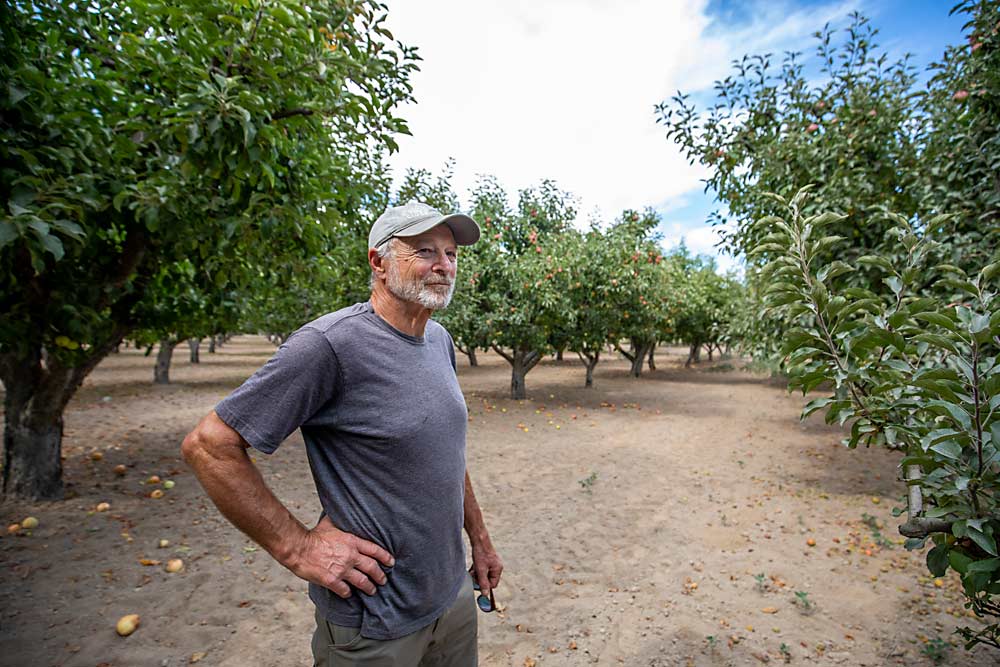
Nestled in the hills north of San Francisco lies a tiny microclimate where farmers grow apples with no irrigation at all.
The multi-year drought that besets California? Not here. Sunburn? Not typically a problem. Those uber heat waves that baked the West Coast this summer? They skipped western Sonoma County.
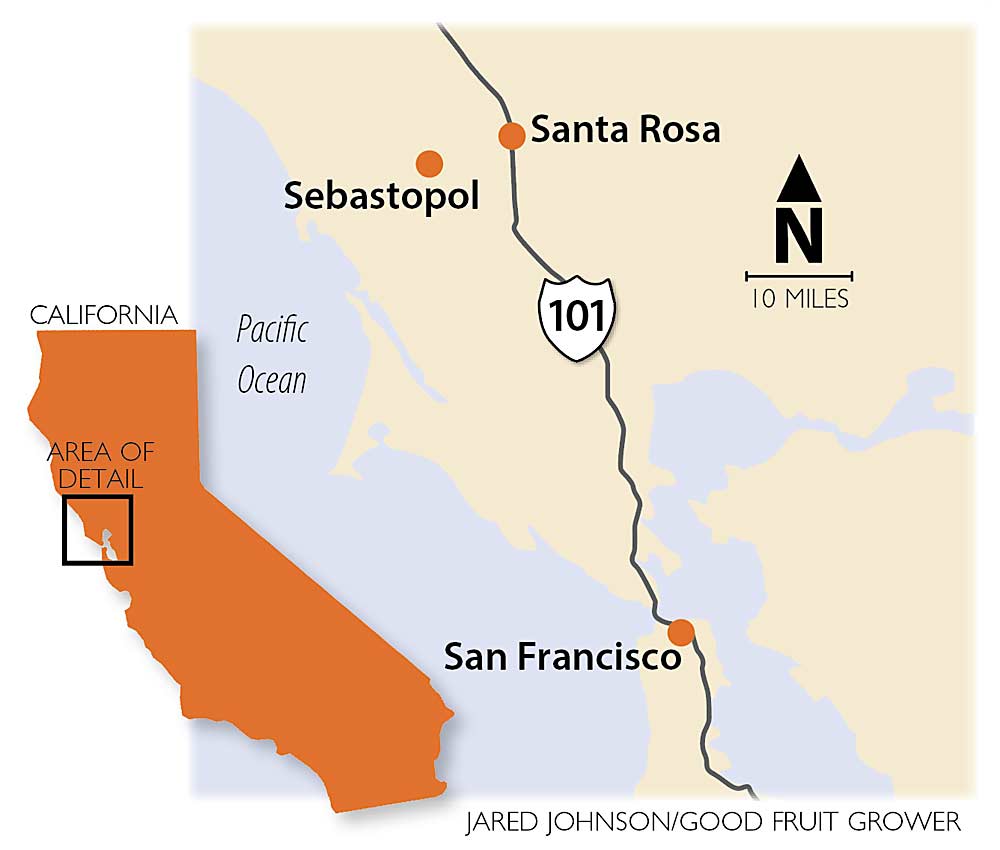
“This year has been just gorgeous,” said Stan Devoto, an apple grower in Sebastopol, a town just west of Santa Rosa with an average rainfall of 42 inches per year, according to weather-and-climate.com.
Days are warm and nights are cool, just as they were 100 years ago when Russian immigrants began growing apples in the region, Devoto said. With a well that reaches 670 feet deep, he irrigates new plantings — sometimes using a 300-gallon water truck — but lets his mature trees reach deep into the sandy loam for moisture and nutrients.
The farm is not agritainment. Devoto does not host visitors or weddings. He sells production from his 25 acres of apples primarily to the fresh-pack wholesale market and farmers markets around the Bay Area. He does sell some apples to two Sonoma County cideries — Golden State Cider, owned by his daughter, and Horse and Plow Cidery — but he is a local outlier for his focus on the fresh market.
“You cannot make a living (growing) processing apples,” he said.
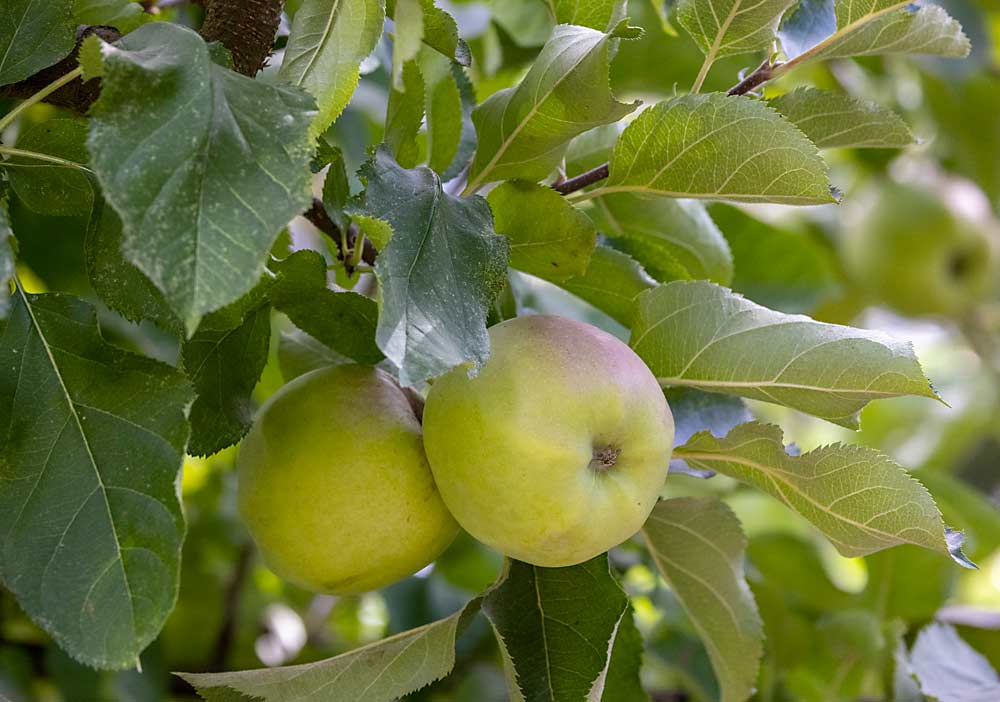
History of tree fruit
Sonoma County is known more for grapes and its 18 American Viticultural Areas, but tree fruit has long played a role in the area.
Russian settlers on the coast in the 1800s brought apple seedlings with them, but they struggled to produce. Farmer Nathaniel Griffith planted the first commercial orchards and introduced the Gravenstein to Sebastopol in 1890. Later, the county was the chosen home of Luther Burbank, a farmer and breeder credited with the introduction of 10 different apple varieties, as well as numerous peach, plum and cherry cultivars, according to the Western Sonoma Historical Society.
In the 1940s and 1960s, Sonoma County had 14,000 acres of dryland apples, with Gravenstein, Jonathan, Golden Delicious, Red Delicious and Rome Beauty leading the way. Acreage started to decline in the 1970s. Martinelli’s, the cider company from Watsonville, California, used to be a big Sonoma apple buyer, but not anymore.
Now the county hosts 2,200 acres, the highest apple acreage among California counties, according to U.S. Department of Agriculture statistics. However, most apples go to processing.
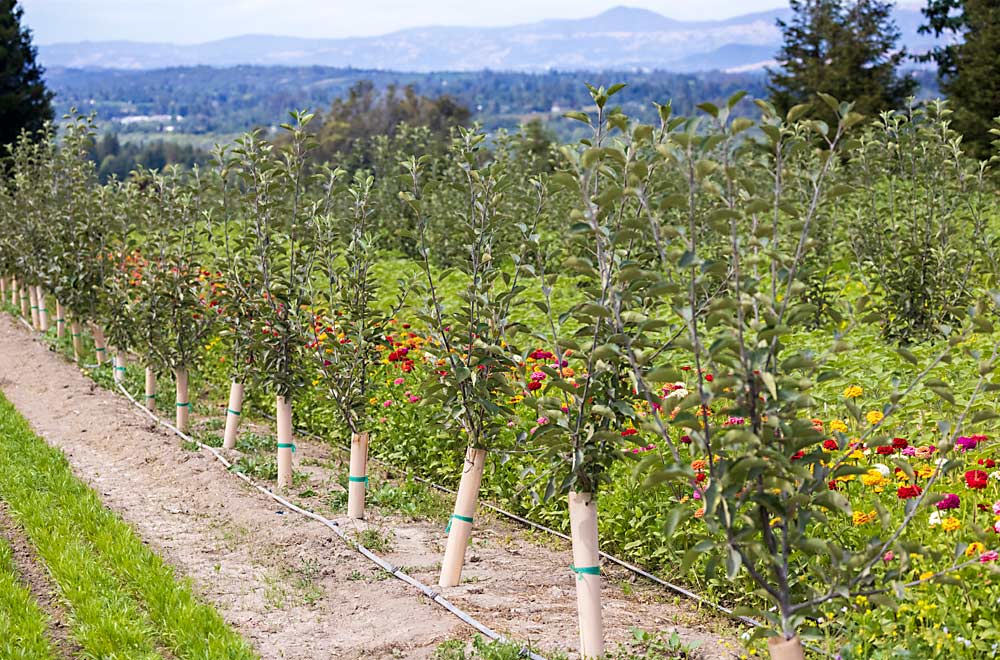
Statewide, only 40 percent or so of California’s apple volume is packed fresh. That usually comes from the irrigated areas of the Central Valley, centered around Lodi, said Todd Sanders, president of the California Apple Commission.
The state has a few pockets of favorable weather, usually at higher elevations in the Sierra Nevada foothills, where some wholesale growers get away with techniques such as not using overhead cooling. “They don’t have to worry about that type of stuff,” Sanders said.
The California Apple Commission doesn’t expect other apple growers to cut water completely but funds research into soil moisture retention and conservation to improve sustainability.
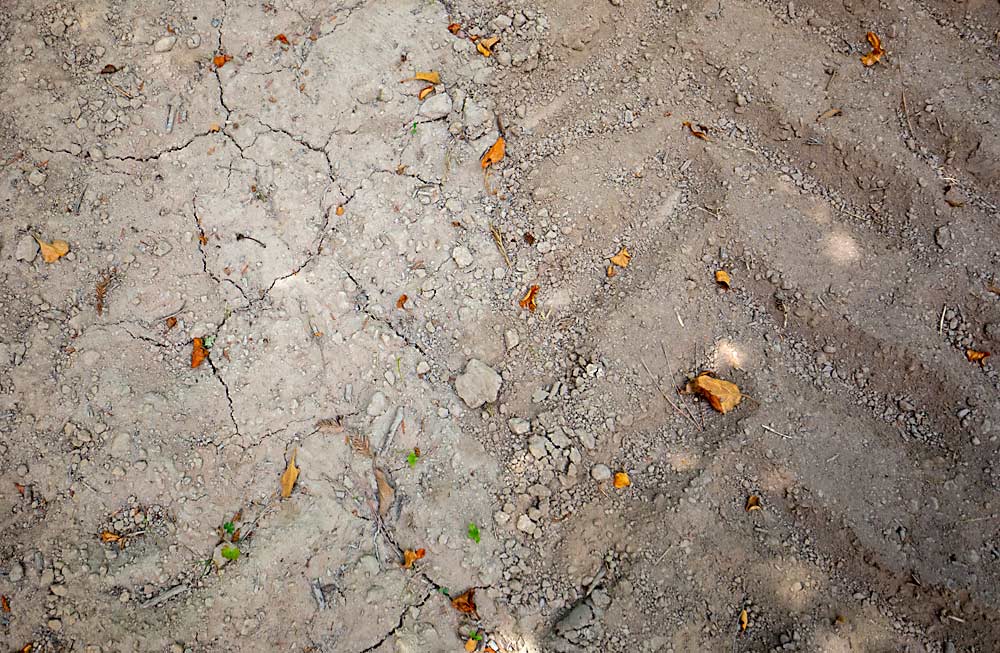
In Sebastopol
The community of Sebastopol has had heat waves. In 2020, Devoto watched fires crawl over the eastern hills that divide the Sonoma and Napa valleys, though the fires didn’t threaten his farm. But across the years, Devoto has made dryland farming work well enough to produce an average of 12 to 14 tons per acre.
He farms 44 acres total: 25 acres of apples, 11 of wine grapes and eight of cut flowers.
Some of his apple orchards have 60-year-old trees, which came with the property that the construction worker and his wife purchased in the 1970s.
With his trees sending deep roots, Devoto plants with spacing of 12- by 24-feet, 12-by-18 or 7-by-14. The smallest spacing he calls semidwarf, most of it planted in 1988.
Though flooding and erosion are sometimes concerns, he keeps drive rows bare during the growing season to avoid other vegetation competing with apple roots. Devoto discs his ground twice in the spring, then cultipacks with a ring roller to create a crust that he says holds in moisture.
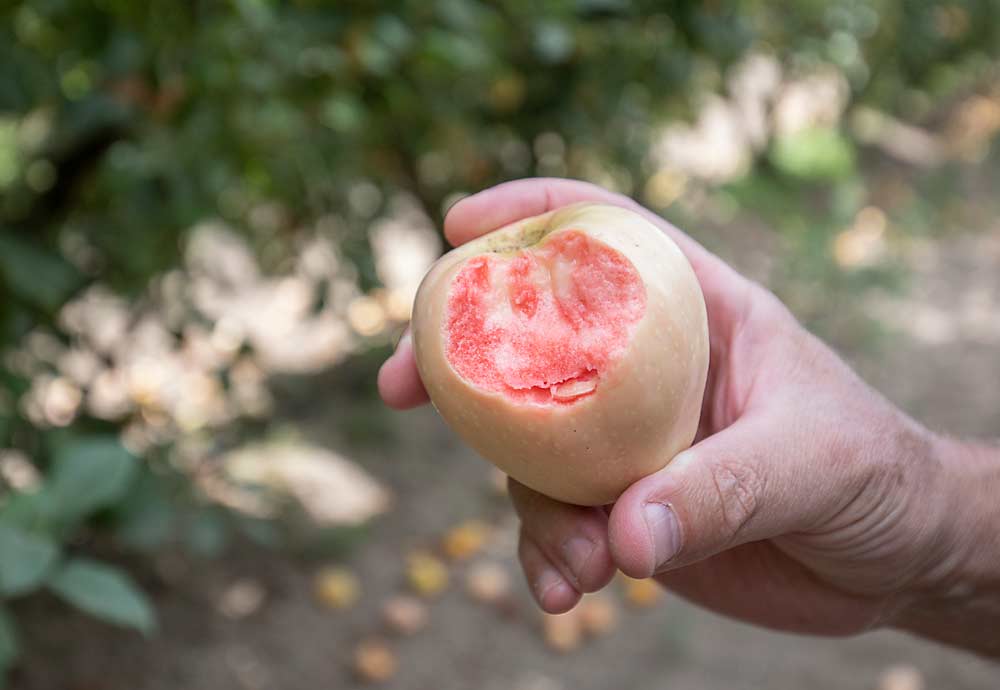
His whole farm is organic, as are most in the area. He uses pheromone emitters every 5 acres for codling moth and sprays Entrust, at $135 per acre, when needed.
The farm hosts a portfolio of more than 100 varieties, most of them “multipurpose” apples, good for dessert eating, cider or cooking. Ashmead’s Kernel, Sierra Beauty, Black Twig and Pink Pearl are just a few. He has one tiny variety named Wickson, which he needs to sell for $5 to $6 per pound to make a return. When one variety doesn’t produce, he quickly topworks it over to something else.
He has some apples, such as Mutsu, on drought-tolerant seedling rootstocks on 12- by 18-foot spacing. He also uses Malling 111 roots for his semidwarfs, as well as Budagovsky 118 and Antonovka, a vigorous Russian rootstock known for drought tolerance and that reaches maturity in six to eight years.
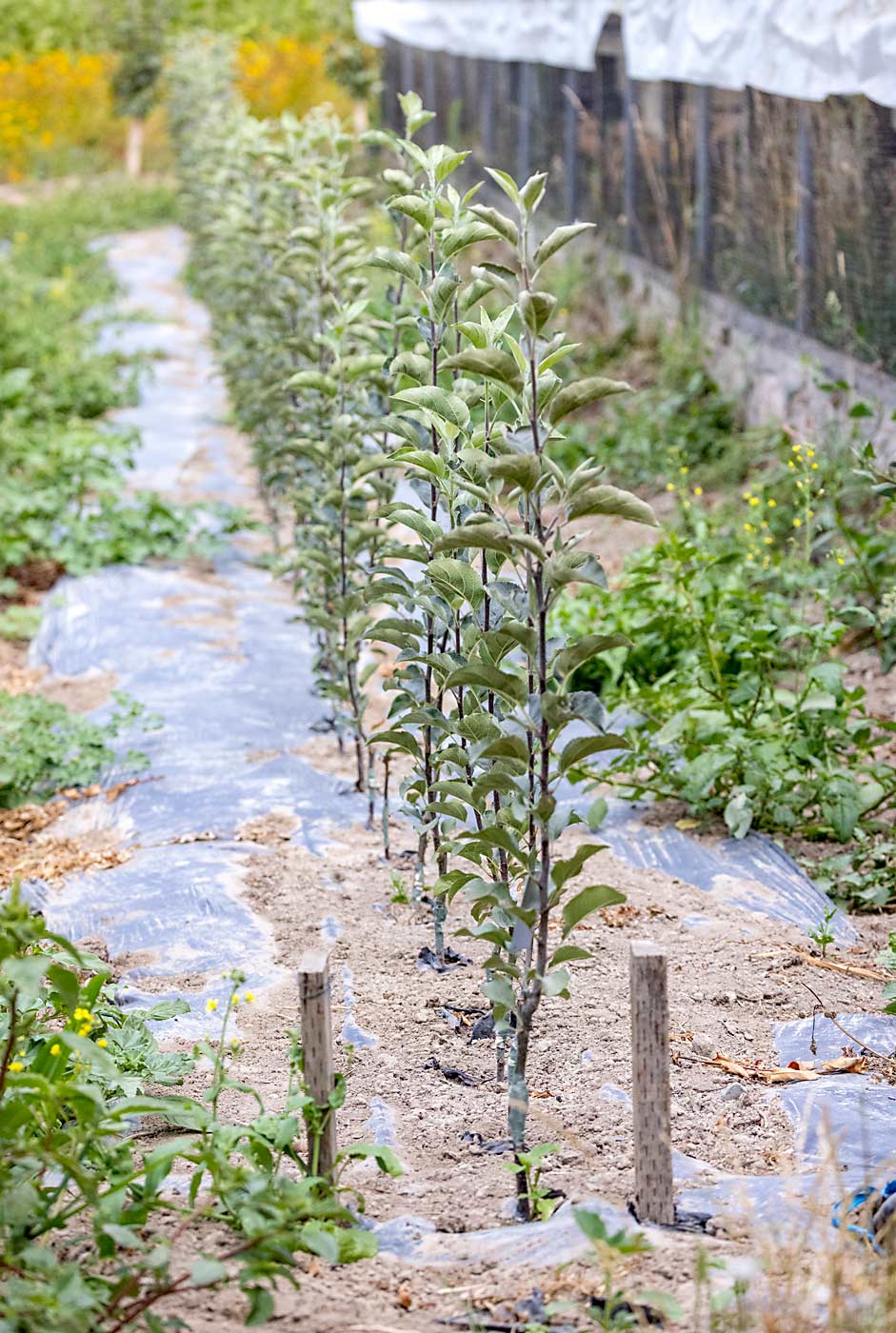
The challenge isn’t just water, it’s labor, Devoto said, much like everywhere else. His spacious trees do not lend themselves to mechanization, so everything is done by hand. That makes it hard to compete with the region’s wine grape industry, where companies offer health plans and other benefits he can’t.
His diversity of varieties paces his harvest and other seasonal chores, enabling him to keep his crews busy year-round, but growing apples in California is tough, with or without water.
“I’m not going to sugarcoat anything; it’s a struggle,” he said.
—by Ross Courtney






Leave A Comment